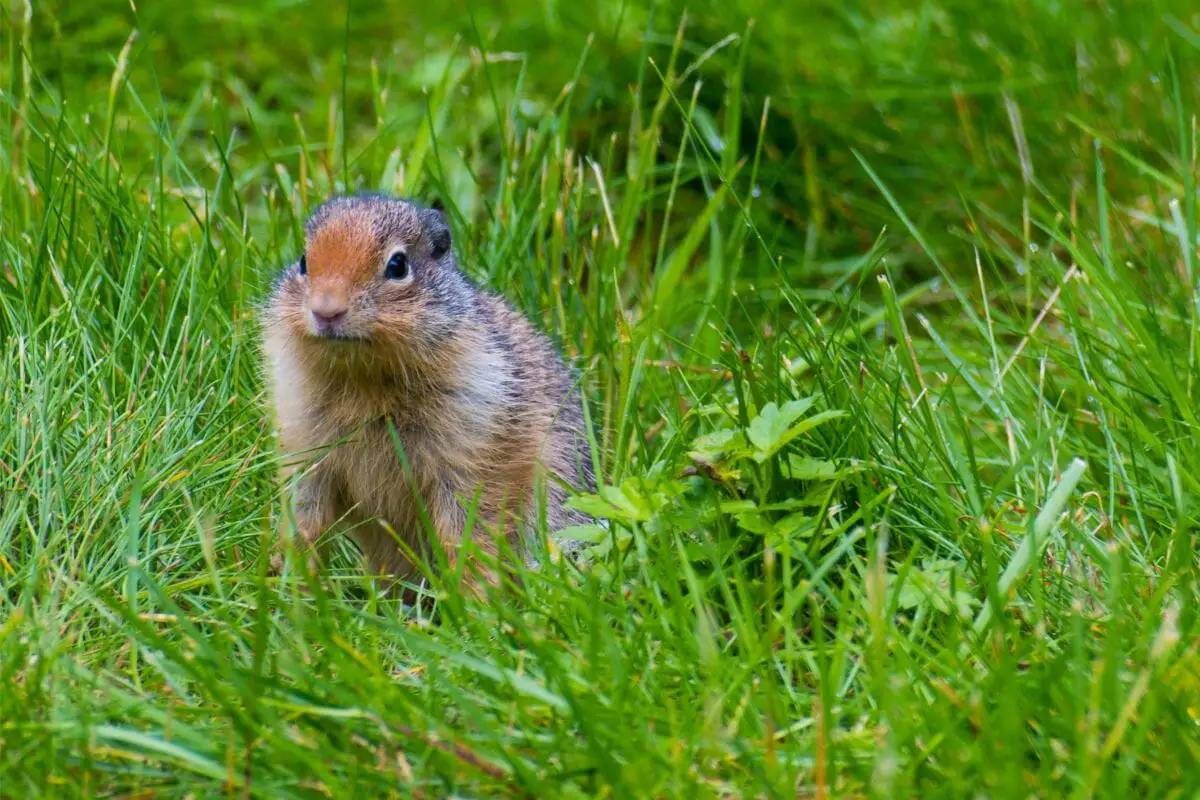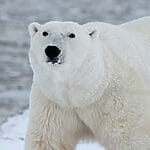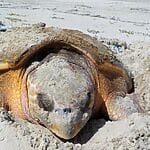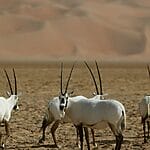25% of the surface of the world is made up of grasslands. Unsurprisingly, it is home to lots of different animals. The coyote, wildebeest and many other animals treat the grasslands as their habitat.
Animals who eat grass, (see also: Animals That Eat Grass) twigs, shrubs and certain other animals will thrive in this environment. The grasslands have a very varied climate that is affected by the different seasons.

The animals on this list live in temperate grasslands as they can’t survive if their habitat dries up.
Gopher
In the grasslands of South America and Central America, you will find the Gopher. This animal is from the rodent family. They use tunnels to protect themselves from predators and they gather food from there.
Just like lots of other rodents, these animals are very small. They live for five years and are very good at surviving despite there being quite a lot of risks to them. They are at risk from attacks from many different predators, including snakes.
Coyote
The coyote is the main predator of the grasslands. They have adapted in the grasslands to hunt other animals to feed themselves.
They are very good at camouflaging into the environment because their fur blends in with the grasslands. This means that they are very good at hunting down prey that is fairly elusive.
In the winter months, the coyote feeds on grass and other fruits. However, at other times of the year, it eats other animals like the Bison.
There is a lot of competition for the coyote in the grasslands. For instance, the cougar provides a lot of competition for them as they hunt some of the same animals.
Prairie Dogs
The prairie dog looks very little like a dog and is much more similar to a squirrel. However, the prairie dog sounds very similar to the howl of a dog, especially when it is in danger.
This animal suits the grasslands very well as the grasslands provide them with lots of places to hide.
They can protect themselves here against blizzards, floods and other harsh weather conditions that you sometimes get in the grasslands during the winter months.
These animals are great at protecting themselves as they work together(see also: Animals That Work Together). Whenever they sense danger or have spotted a predator, they will raise an alarm to alert all of the other dogs in the area.
For these reasons it is very difficult to hunt down the Prairie dog.
Przelwalski Horse
Wild horses were found in the grasslands in Mongolia. This horse was discovered by Nikolai Przelwalski, a Russian explorer. This is where the horse gets its name.
These horses live in small groups and they travel with a stallion who leads the pack. They do this because they then work in groups to defend themselves against any attackers.
These horses are herbivores, and they feed off the grassland rather than other animals.
Badgers
Badgers are found in North America in the grasslands. There are lots of different species of badgers and so it is not easy to determine which species you are looking at.

Badgers were commonly hunted for their meat, however, this has been stopped now because they were becoming endangered. Due to the badger being used to being hunted, they have learnt to hide.
American Bison
The American Bison is also known as the American Buffalo. This animal lives in the grasslands of North America. In the 19th century, the American Bison almost become extinct.
Since then, because of conservation efforts, the species is no longer in danger. The Bison is a very heavy animal that has a round hump.
Bison are also found in the grasslands of Europe. These animals are very different from the American species. The European species cannot be domesticated, however, the American species can be placed along with other cattle.
However, you should remember that the Bison can be quite dangerous if they are provoked. They may be deadly.
Giant Anteater
The giant anteater is very well known and it feeds on insects and ants. The type of insect that the anteater feeds on depends on the season. The anteater tracks down its prey by using scent.
The anteater is found in Central and Southern American grasslands.
The anteater has a lot of predators, including the jaguar. The anteater is quite good at escaping their prey. They are very quick, they are also great at using their hind legs to defend themselves.
These animals are very nimble, they are very good swimmers. Anteaters are great at adapting to hot and cold weather so they live in the grasslands all year round.
Pronghorns
Pronghorns do very well in grasslands because they are herbivores. They can eat lots of different herbs that other herbivores can’t eat.
The main thing that herbivores eat is cud which is digested by Pronghorns by chewing the cud (see also: Animals That Chew Cud).
The species are currently being protected in certain states in the United States because they are often hunted. As they are endangered, the hunting of these animals has been limited.
Swift Fox
The swift fox lives in North American grasslands. It can mainly be found in New Mexico, Oklahoma, Arizona and Kansas. This fox eats insects and fruits.
It has been saved from possible extinction because the swift fox was in danger. Conservation efforts helped this fox from being injured.
The swift fox lives between 3 and 6 years in the grasslands, but if it is in captivity it can live up to 14 years.
Blue Wildebeest
The wildebeest is found in the grasslands in Kenya and Tanzania. It is a very well known migration that the wildebeests take from Serengeti grasslands in Tanzania to the Maasai Mara in Kenya.
Lots of predators follow the group of Wildebeests on this migration and so they are in danger.
The grasslands suit the wildebeests very well as they have a suitable place to breed and they have a great diet. They migrate because they are in search of water.
This was all about these amazing animals, I hope you liked it. You can learn more about animals that start with K here.








